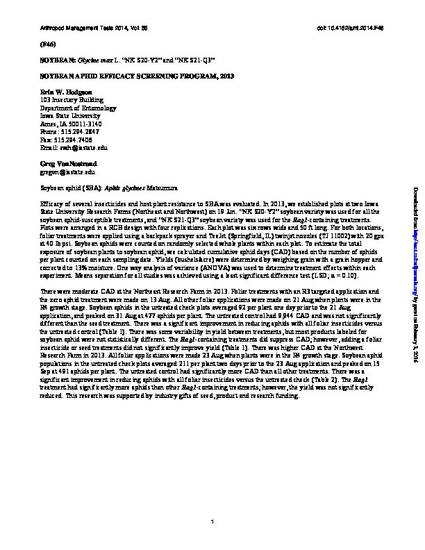
Efficacy of several insecticides and host plant resistance to SBA was evaluated. In 2013, we established plots at two Iowa State University Research Farms (Northeast and Northwest) on 19 Jun. “NK S20-Y2” soybean variety was used for all the soybean aphid-susceptible treatments, and “NK S21-Q3” soybean variety was used for the Rag1-containing treatments. Plots were arranged in a RCB design with four replications. Each plot was six rows wide and 50 ft long. For both locations, foliar treatments were applied using a backpack sprayer and TeeJet (Springfield, IL) twinjet nozzles (TJ 11002) with 20 gpa at 40 lb psi. Soybean aphids were counted on randomly selected whole plants within each plot. To estimate the total exposure of soybean plants to soybean aphid, we calculated cumulative aphid days (CAD) based on the number of aphids per plant counted on each sampling date. Yields (bushels/acre) were determined by weighing grain with a grain hopper and corrected to 13% moisture. One way analysis of variance (ANOVA) was used to determine treatment effects within each experiment. Means separation for all studies was achieved using a least significant difference test (LSD; α = 0.10).
Available at: http://works.bepress.com/erin_hodgson/279/

This article is from Arthropod Management Tests 39 (2014): F46, doi:10.4182/amt.2014.F46. Posted with permission.